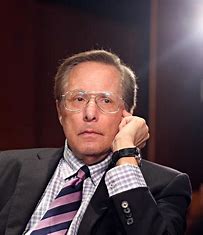Introduction
William Friedkin is an American film director, producer, and screenwriter who is best known for his contributions to the film industry. He has directed some of the most iconic films in history, including The French Connection, The Exorcist, and To Live and Die in L.A. His work has earned him numerous awards and accolades, and his influence on the film industry is undeniable. In this comprehensive guide, we will explore the films and career of William Friedkin, delving into his most famous works and examining his impact on the film industry.
Early Career

Background and Education
William Friedkin was born in Chicago, Illinois, in 1935. He grew up in a Jewish family and attended high school in the city. After graduating, he briefly attended the University of Illinois before dropping out to pursue a career in the arts. He began working as a television producer and director in the 1960s, and his early work included documentaries and television dramas.
First Feature Films
Friedkin’s first feature film was The Birthday Party, released in 1968. The film was based on a play by Harold Pinter and starred Robert Shaw and Patrick Magee. Although the film was not a commercial success, it received critical acclaim and helped establish Friedkin as a promising young director. He followed up with the film adaptation of Mart Crowley’s play The Boys in the Band, which was also well-received by critics.
The French Connection and The Exorcist
The French Connection
In 1971, Friedkin directed The French Connection, a crime thriller based on the true story of two New York City detectives who attempt to break up a drug smuggling ring. The film starred Gene Hackman and Roy Scheider and was a critical and commercial success. It won five Academy Awards, including Best Picture and Best Director, and solidified Friedkin’s reputation as a major filmmaker.
The Exorcist
In 1973, Friedkin directed The Exorcist, a horror film based on the novel by William Peter Blatty. The film starred Ellen Burstyn, Max von Sydow, and Linda Blair and told the story of a young girl who becomes possessed by a demon. The film was a massive commercial success and became one of the highest-grossing films of all time. It was also a critical success, receiving numerous awards and nominations. The film’s impact on popular culture was immense, and it is widely regarded as one of the greatest horror films ever made.
Later Career
To Live and Die in L.A.
In 1985, Friedkin directed To Live and Die in L.A., a crime thriller starring William Petersen and Willem Dafoe. The film received mixed reviews but has since become a cult classic. It is known for its intense car chase scenes and its depiction of the seedy underbelly of Los Angeles.
Bug and Killer Joe
In the 2000s, Friedkin directed several smaller films, including Bug and Killer Joe. These films were more experimental and received mixed reviews, but they demonstrated Friedkin’s willingness to take risks and explore new territory as a filmmaker.
Conclusion
William Friedkin’s career has spanned over five decades, and his contributions to the film industry are immeasurable. His films have influenced countless filmmakers and continue to be celebrated by audiences around the world. Whether you are a fan of crime thrillers, horror films, or experimental cinema, there is something in Friedkin’s body of work that will speak to you. We hope that this comprehensive guide has given you a deeper appreciation for the films and career of William Friedkin, and that you will seek out his work and explore it for yourself.



